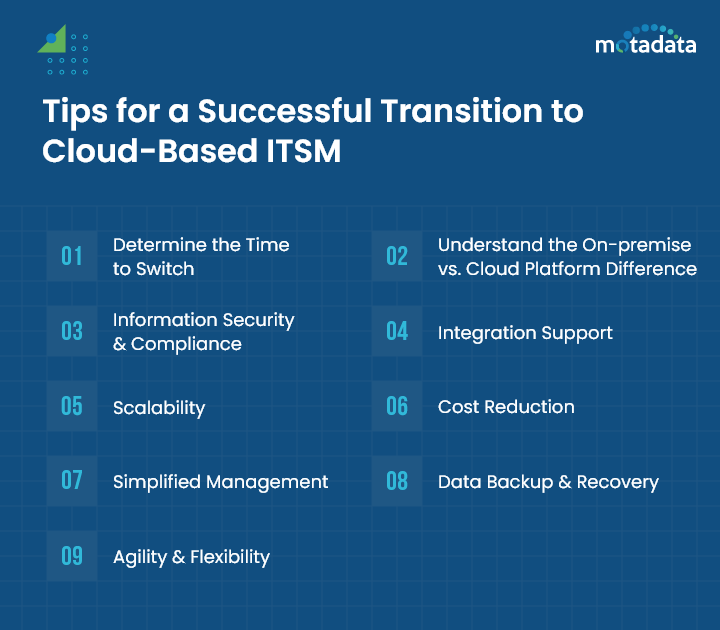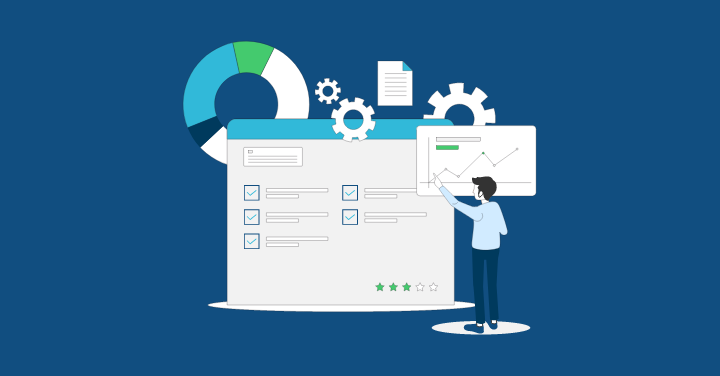Today, organizations of all sizes heavily depend on Information Technology Service Management (ITSM) solutions to elevate operational efficiency and customer satisfaction.
The advent of cloud technology has presented a jaw-dropping opportunity for numerous businesses, given the benefits that cloud-based ITSM solutions provide.
Nevertheless, before embarking on the transition to a cloud-based solution, it is imperative to assess your organization’s IT needs and take into account the essential factors that will influence your decision.
Read on to explore a comprehensive list of factors to consider before migrating your product’s platform from on-premise to the cloud.
1. Determine the Time to Switch
Determining the time to switch is essential. And for this, you need to be aware of the signs that act as a clear signal that it’s time to move on to the cloud platform now.
Some of these major signals are when your system hardware:
- Faces compatibility issues with latest technologies
- Starts depreciating
- Becomes difficult to manage by your IT team
For example, consider a banking organization running all their applications on bare metal whose maintenance keeps on increasing down the line. Also, replacing them is way too expensive.
In such scenarios, a cloud-based ITSM solution can become a lifeline, with the cloud service provider holding the entire responsibility for all the IT infrastructure and its upkeep.
2. Understand the On-premise vs. Cloud Platform Difference
Before switching, understanding the pros and cons of both platforms is always a good practice. And based on the analysis, you can decide whether the platform should be changed.
Some of the key differences are as follows.
| On-Premise ITSM | Cloud-based ITSM |
|---|---|
| It runs on the hardware and servers hosted locally. | It is accessible via a web browser and only needs proper Internet speed. |
| The organization itself owns the software. | The organization does not own it but uses the software with the help of Cloud Service Provider. |
| On-premise infrastructures need a separate security department to handle the incidents and issues that arise. | Cloud-based infrastructures have different security protocols and standards already implemented |
3. Information Security and Compliance
Information security is one of the topmost considerations when transitioning to a cloud-based ITSM.
Your company’s data are sensitive and priceless, demanding full-proof protection.
Hence, before handing over all your IT property, ensure that your selected cloud service provider is verified and complies with the industry-specific regulations and certifications.
4. Integration Support
Many businesses rely on a number of solutions for IT management, like ticketing systems, monitoring tools, patch management, and asset management software.
Hence, ensure that the selected ITSM solution can smoothly integrate with your existing infrastructure while choosing.
The integration capabilities play a critical role in organizing the processes and elevating the overall efficiency.
5. Scalability
While everything has limitations, a cloud-based ITSM offers scalability based on demand.
It’s essential to evaluate how easily you can expand or downsize your services to align with your changing business needs.
Since the service provider charges as per your needs, it’s top-most that the solution accommodates your expansion without incurring significant infrastructure investments.
6. Cost Reduction
Many times, the expenditure on hardware, software, and maintenance becomes unmanageable in an on-premise setup.
At that time, a cloud-based ITSM comes to the rescue where only the services are used.
Hence, the maintenance cost becomes zero, enabling resources to focus more on the core business functions.
Moreover, the industries are moved to a subscription-based pricing model, enhancing cost efficiency and reducing the overall ITSM costs.
7. Simplified Management
With cloud-based ITSM, it is possible to manage all the IT infrastructure components centrally.
Thus, reducing complexity and freeing the IT Teams from manually managing the hardware and software.
A single update can be deployed in multiple systems just by the push of a button.
8. Data Backup and Recovery
Nothing is set in stone or entirely guaranteed; mishaps can occur, and it’s essential to have measures or a recovery plan in place.
When choosing a cloud-based ITSM solution, examine the supported backup options and verify that data can be swiftly recovered in the event of an unpredicted failure.
Thereby ensuring higher availability and protection against data loss.
9. Agility and Flexibility
Everyone needs a solution that is flexible and adaptable to changing conditions.
Cloud-based ITSM is the one that can easily and rapidly adapt to the growing business requirements with flexibility in service provisioning.
Also, it facilitates the quick deployment of new IT services and updates, promoting business agility.
Conclusion
Moving to a cloud-based ITSM solution is significantly advantageous.
However, at the same time, it is essential to understand your company’s current status.
Knowing the pros and cons of both platforms helps in making a well-informed decision.
However, if you are still confused, you can contact us and get a clear picture from our Motadata team.
We can guide you in the entire process of migration from on-premise to cloud smoothly.
Also, if you’re on a lookout for an ideal cloud-based ITSM solution, Motadata ITSM solution can end your search.
This is because It delivers all the functionalities of on-premise solutions as well as offers scalability and robust support features.
To know more about it, get a free trial or schedule a demo.





